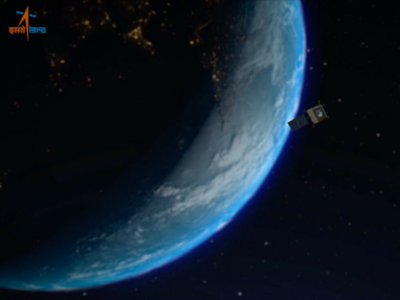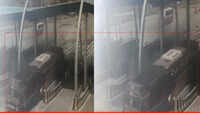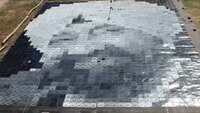
BENGALURU: The Indian Space Research Organisation (Isro) on Wednesday announced it is looking to launch Chandrayaan-2 between July 9 and July 16, with the Moon landing expected in September. However, with just about 60 days left for the proposed launch date, only one of the three key modules of Chandrayaan-2, India’s second lunar mission, is ready.
Sources in Isro said that of the three crucial modules of the mission — the Orbiter, Lander and Rover — only the Orbiter (the satellite) is mission ready, with several tests still keeping the other two on test beds.
“The orbiter has attained MOR (mission operation readiness) status, the rover and lander haven’t gone so far yet. The instruments on Pragyan, including the camera, are being tested at the Lunar Terrain Test Facility (LTTF) at the Isro Spacecraft Integration Test Establishment (Isite). Data from these instruments is being collected. For instance, we are taking images from the camera and making models,” the source said.
While Pragyan too has seen a smooth transition from the design on paper to the actual module, Vikram has been a concern for Isro with the design changed multiple times. Among several hiccups faced by Vikram, its qualification model, as reported by TOI in April, had suffered some damages during an earlier drop test.
“The review and redesign is now complete, which means that several new tests will now have to been done,” the source said. Isro chairman Sivan K had earlier said that the damage during the drop test was caused because of wrong configuration and orientation of the test.
Key Lander Test
With the review and redesign now complete, the space agency has moved the qualification model of Vikram to Byalalu, where it owns huge land as part of the Isro Telemetry, Tracking and Command Network (Istrac).
“We will conduct the Landing Terminal Detailed Test (LTDT), which is likely to begin Monday and go on for at least a week,” the source said.
The TOI has learnt that Vikram will be tested at a height of only a few metres, to check for hovering and horizontal movement. “There may finally even be a touchdown test, but that will depend on the ground condition. The initial tests will see the lander hanging by a construction crane with the engine turned on. We will be measuring the velocity and the force,” the source said.
Sivan, while confirming that the lander will be tested, said: “There is a lot of curiosity about this mission and we will give out more details in the first week of June. We are also going to show Chandrayaan to the people through you (media).”
Sources in Isro said that of the three crucial modules of the mission — the Orbiter, Lander and Rover — only the Orbiter (the satellite) is mission ready, with several tests still keeping the other two on test beds.
It is noteworthy that the Lander (Vikram) and the Rover (Pragyan) are modules Isro has no past experience in making, while it has already built and operated a satellite to go around the Moon as part of Chandrayaan-1.
“The orbiter has attained MOR (mission operation readiness) status, the rover and lander haven’t gone so far yet. The instruments on Pragyan, including the camera, are being tested at the Lunar Terrain Test Facility (LTTF) at the Isro Spacecraft Integration Test Establishment (Isite). Data from these instruments is being collected. For instance, we are taking images from the camera and making models,” the source said.
While Pragyan too has seen a smooth transition from the design on paper to the actual module, Vikram has been a concern for Isro with the design changed multiple times. Among several hiccups faced by Vikram, its qualification model, as reported by TOI in April, had suffered some damages during an earlier drop test.
“The review and redesign is now complete, which means that several new tests will now have to been done,” the source said. Isro chairman Sivan K had earlier said that the damage during the drop test was caused because of wrong configuration and orientation of the test.
Key Lander Test
With the review and redesign now complete, the space agency has moved the qualification model of Vikram to Byalalu, where it owns huge land as part of the Isro Telemetry, Tracking and Command Network (Istrac).
“We will conduct the Landing Terminal Detailed Test (LTDT), which is likely to begin Monday and go on for at least a week,” the source said.
The TOI has learnt that Vikram will be tested at a height of only a few metres, to check for hovering and horizontal movement. “There may finally even be a touchdown test, but that will depend on the ground condition. The initial tests will see the lander hanging by a construction crane with the engine turned on. We will be measuring the velocity and the force,” the source said.
Sivan, while confirming that the lander will be tested, said: “There is a lot of curiosity about this mission and we will give out more details in the first week of June. We are also going to show Chandrayaan to the people through you (media).”
Download The Times of India News App for Latest India News.
#ElectionsWithTimes
more from times of india news
Elections 2019

Trending Topics
LATEST VIDEOS
More from TOI
Navbharat Times
Featured Today in Travel
Quick Links
Rajasthan election 2019Andhra Lok Sabha electionGujarat Election 2019Karnataka Election 2019MP Lok Sabha electionMaharashtra election 2019West Bengal Lok SabhaTamil Nadu election 2019UP Election 2019Bihar election 2019UP Election DateAndhra Election DateBihar Election DateAndhra Assembly ElectionLok SabhaMP Election DateMaharashtra Election DateShiv SenaYSRCPTDPWB Election DateJDUCongressBJP newsGujarat Election DateSC ST ActUIDAIIndian ArmyISRO newsSupreme CourtRajasthan Election DateTelangana Election DateTamilrockers 2018Uttarakhand newsSikkim newsOrrisa newsKarnataka Election DateNagaland newsSatta KingManipur newsMeghalaya news
Get the app










